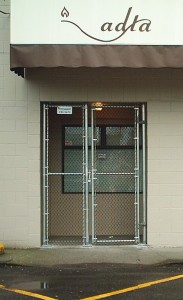It is not about gangs and crime – it is about business.
Abbotsford Chief Constable Bob Rich’s statement at the recent gang forum in Abbotsford that one average-sized grow operation in the Fraser Valley can net a gang between $500,000 and $1 million a year underscores that above all else the illegal drug trade is not about gangs and crime but about BUSINESS.
Indeed the illegal drug trade is currently the big, highly profitable, international business whose operations and operating principles reflect pure unfettered capitalism. Indeed the illegal drug trade is more purely capitalistic than the legal drug trade.
Choosing to ignore the reality that the illegal drug trade is a business as the legal drug trade is, simply results in flawed public policy on the issues involved.
Consider that even though the cigarette business results in the death of one third of its users it continues to be profitable because, despite the negative health hazards (including death) people ignore the negative consequences and create a demand for cigarettes which the cigarette industry is happy to provide – corporate profit being more important to the business than the cost to people or society.
The alcohol industry also imposes heavy costs on users and society but again people ignore the negative consequences and create a demand which business is happy to provide – corporate profit being more important than the cost to people or society. Do not overlook the irony of the beer industry campaigning against California’s proposition 19 (legalize marijuana) to protect its profitability from a legal marijuana industry.
The financial services industry sold worthless paper to the public (and each other) all in the name of corporate profit, extravagant salaries and bonuses while ignoring the cost (in the end ¾ of a trillion dollar cost) to society and the disastrous cost that many individuals paid (bankruptcy and losing their homes).
Asbestos use is banned in 52 countries, including Canada. Yet the Canadian asbestos industry exports 200,000 tonnes of asbestos a year to developing countries and crusades to keep the substance off the international list of hazardous materials. These exports are killing people, giving them asbestosis, but what does that matter – it is profitable.
North America is dotted with toxic wastes sites; Abbotsford was stuck cleaning up a toxic waste site when the operators walked away after sucking all the profit out of the operation they could; illegal dumping of toxic waste continues to plaque the environment and governments – all in the pursuit of profit.
It is irrational to expect the illegal drug business to operate on principles, or lack of principles, any different than legal businesses – maximize profit at any cost.
It follows therefore, that to end the illegal drug trade requires taking the profit out of the business.
The cost of doing business must rise to a point it makes the business unprofitable or the cost of being in the business must rise to the point that no one wants to be employed in the business or the demand for the product must be reduced to the point that the costs of doing business are no longer covered.
Reality in the illegal drug business is the fixed nature of the demand (rising prices do not proportionally decrease demand) for the product (drugs). This results in an extremely elastic price; resulting in the price of the product rising to offset any increased costs of doing business and maintaining the high profit margins of the business.
More resources for the police, more success for the police simply drives the price of the product higher to cover the increase in costs, with the higher product prices resulting in increasing crime to cover the increased cost of drugs – a classic catch-22 situation.
The elastic nature of the price means that the cost of doing business cannot rise to the point of rendering the business of illegal drugs unprofitable.
The high profit margins, the decreased economic fairness/opportunity and the fact we have created a consumption society where individual’s worth is based not on the person but on the person’s possessions makes available an unlimited labour pool whose members are focused on attaining money/possessions at any cost. A labour pool to whom incarceration and other possible negative outcomes are simply part of the cost of doing business.
That as a society we have made human life the cheapest commodity on the planet and possessions the measure of a persons worth means that you can run all the ‘gang members are losers’ advertising campaigns one chooses – with the labour pool desperate for making big $$$$$ that our society has created, the illegal drug business will have no difficulty finding replacement and/or new employees.
The reality that you cannot render the illegal drug business unprofitable (or less than highly profitable) and that you cannot deny the business a ready supply of employees means that, in order to have any significant, long term effect on the illegal drug business you need to decrease demand to the point that the costs of doing business are no longer covered and/or the wages available are not sufficient to offset the costs of employment in the business.
Pouring ever more resources into police services, the courts and locking more and more people up for longer and longer periods will accomplish nothing except to steadily increase taxes (or fees, premiums, etc) and/or add substantially to the debt and/or force reductions in funding for other areas (healthcare, education).
An ironic twist is that cutting the social programs that governments consider soft or easy to cut will increase the demand for products supplied by the illegal drug business, resulting in increased costs far higher than any costs ‘saved’ through program cuts.
As Alcoholics Anonymous, an organization with a great deal of experience with addiction, says “Doing the same thing, the same way, over and over again and expecting a different result is insanity”.
Rather than learn and change what we are doing, governments, and far too many citizens, advocate spending more to do more of what isn’t working. Is that not insanity2?
This pointlessly insane and substantial resource wasting behaviour results from overlooking or ignoring the fact that whatever labels you choose to apply to the illegal drug trade, the trade is at its core a business.
In order to achieve positive desirable outcomes when dealing with this business, it is a MUST that policies reflect that it is a business.
It does not matter what we as a society believe or what we as a society want to be the case – an analysis of the illegal business reveals that the only effective approach that will make permanent, long term inroads in the illegal drug business is to focus our resources on reducing demand, getting customers of the business into recovery.
Analysis of illegal drugs as the business it is reveals that it is pointless insanity to continue to increase the resources we waste on current policies.
Reducing demand is the only approach that will reduce the illegal drug business by reducing demand.
[‘Only approach’ short of fundamentally changing the nature of the business through legalization; an approach that, no matter how rational, is unlikely to occur until current policies inflict so much financial cost, financial pain (and that point will come), that no other option is left but legalization.]
Unfortunately demand reduction, requiring patience, commitment and time, is not the fast, easy, miracle solution governments and citizens want.
Meaning both the problem and waste of resources will continue to grow, until financial pain forces policy change.












